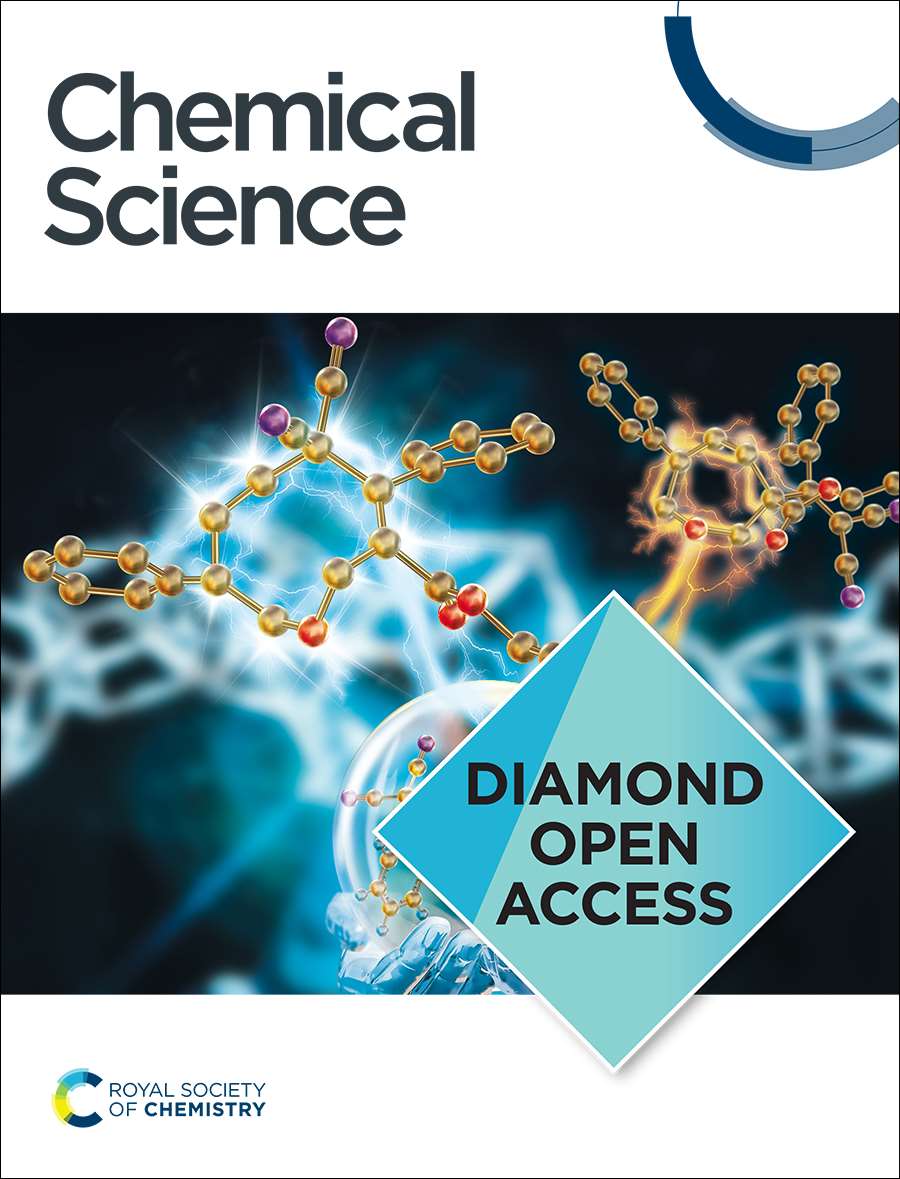Chemical and Mechanical Modifications of Flexible Metal–Organic Frameworks for Enhancing Photocatalysis
IF 7.4
1区 化学
Q1 CHEMISTRY, MULTIDISCIPLINARY
引用次数: 0
Abstract
Postsynthetic modification (PSM) has been widely employed to enhance the functionality of metal–organic frameworks (MOFs) for applications such as gas storage, light harvesting, and catalysis. However, the critical role of framework flexibility in enabling diverse modification pathways and influencing framework properties remains underexplored. In this work, we demonstrate that flexible MOFs offer unique advantages for PSM, using the flexible PCN-128 as a platform for both chemical and mechanical modifications to enhance photocatalytic CO2 reduction activity. Mechanical force induces piezochromic behavior, while sequential postsynthetic annulation reactions extend the π-conjugation of aromatic ligands within PCN-128, both modulating the energy band positions and enhancing visible light absorption. Single-crystal-to-single-crystal transformations were realized throughout the PSM process, offering valuable insights into the transformation process and structure-property relationships. Furthermore, metallo-phthalocyanine-based ligands (M-TcPC, M = Fe, Co, Ni) were introduced as catalytic sites for CO2 reduction via PSM strategies. By optimizing the ratio of photosensitizers to catalytic sites, the modified catalysts achieved a remarkable CO2 reduction rate of 838 μmol·g–1·h–1 under visible light irradiation. This study highlights the untapped potential of flexible MOFs in applying postsynthetic modification strategies to develop advanced photocatalysts for sustainable energy conversion.用于增强光催化的柔性金属-有机骨架的化学和机械改性
合成后修饰(PSM)已被广泛应用于增强金属有机骨架(mof)的功能,如储气、光收集和催化等应用。然而,框架灵活性在实现多种修饰途径和影响框架特性方面的关键作用仍未得到充分探讨。在这项工作中,我们证明了柔性mof为PSM提供了独特的优势,使用柔性PCN-128作为化学和机械改性的平台来增强光催化CO2还原活性。机械力诱导了压电致变色行为,而连续的合成后环化反应扩展了PCN-128内芳香族配体的π共轭,既调节了能带位置,又增强了可见光吸收。在整个PSM过程中实现了单晶到单晶的转变,为转变过程和结构-性能关系提供了有价值的见解。此外,引入了金属酞菁基配体(M- tcpc, M = Fe, Co, Ni)作为PSM策略下CO2还原的催化位点。通过优化光敏剂与催化位点的配比,改性后的催化剂在可见光照射下的CO2还原率达到了838 μmol·g-1·h-1。这项研究强调了柔性MOFs在应用合成后改性策略开发先进的光催化剂以实现可持续能量转换方面尚未开发的潜力。
本文章由计算机程序翻译,如有差异,请以英文原文为准。
求助全文
约1分钟内获得全文
求助全文
来源期刊

Chemical Science
CHEMISTRY, MULTIDISCIPLINARY-
CiteScore
14.40
自引率
4.80%
发文量
1352
审稿时长
2.1 months
期刊介绍:
Chemical Science is a journal that encompasses various disciplines within the chemical sciences. Its scope includes publishing ground-breaking research with significant implications for its respective field, as well as appealing to a wider audience in related areas. To be considered for publication, articles must showcase innovative and original advances in their field of study and be presented in a manner that is understandable to scientists from diverse backgrounds. However, the journal generally does not publish highly specialized research.
 求助内容:
求助内容: 应助结果提醒方式:
应助结果提醒方式:


